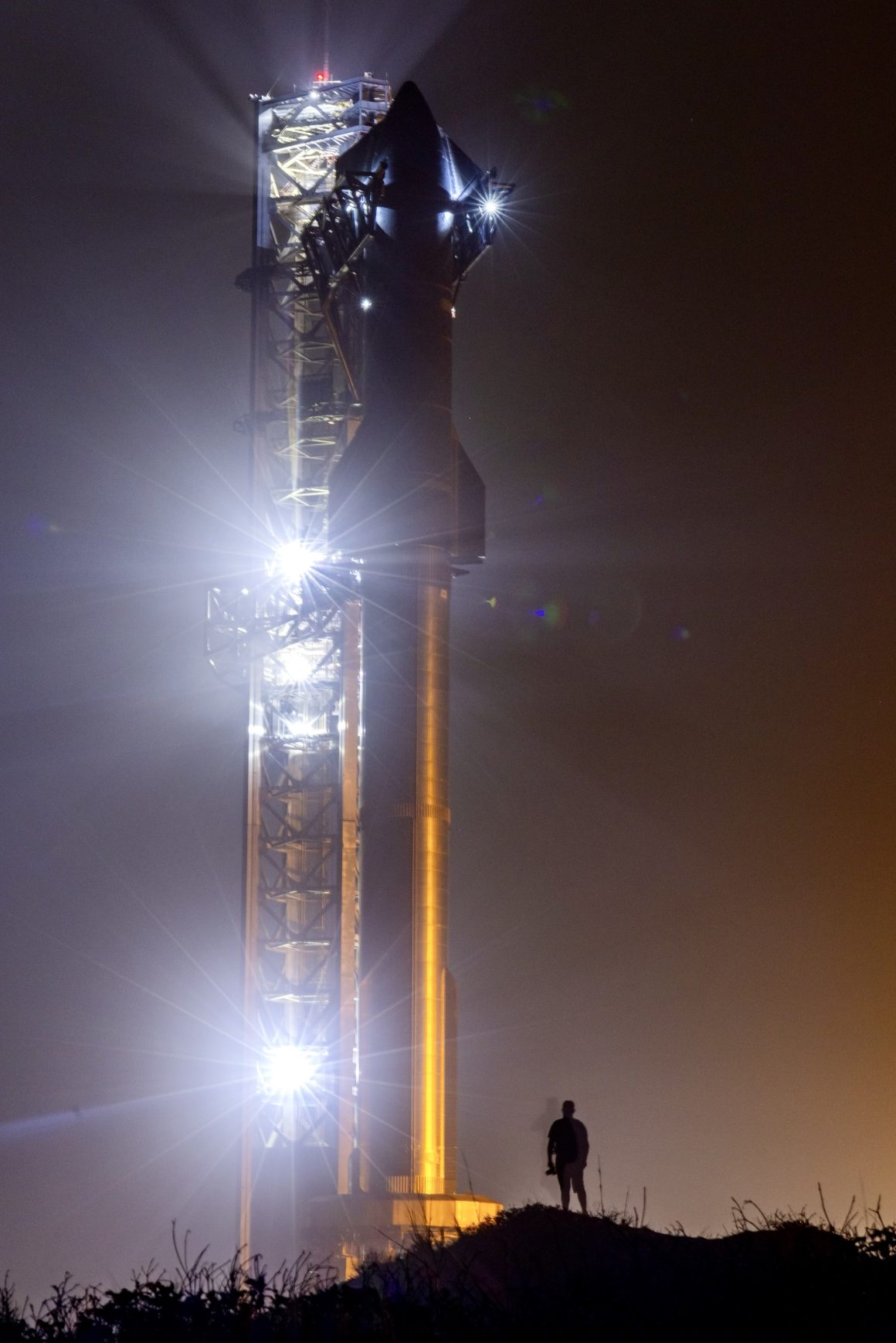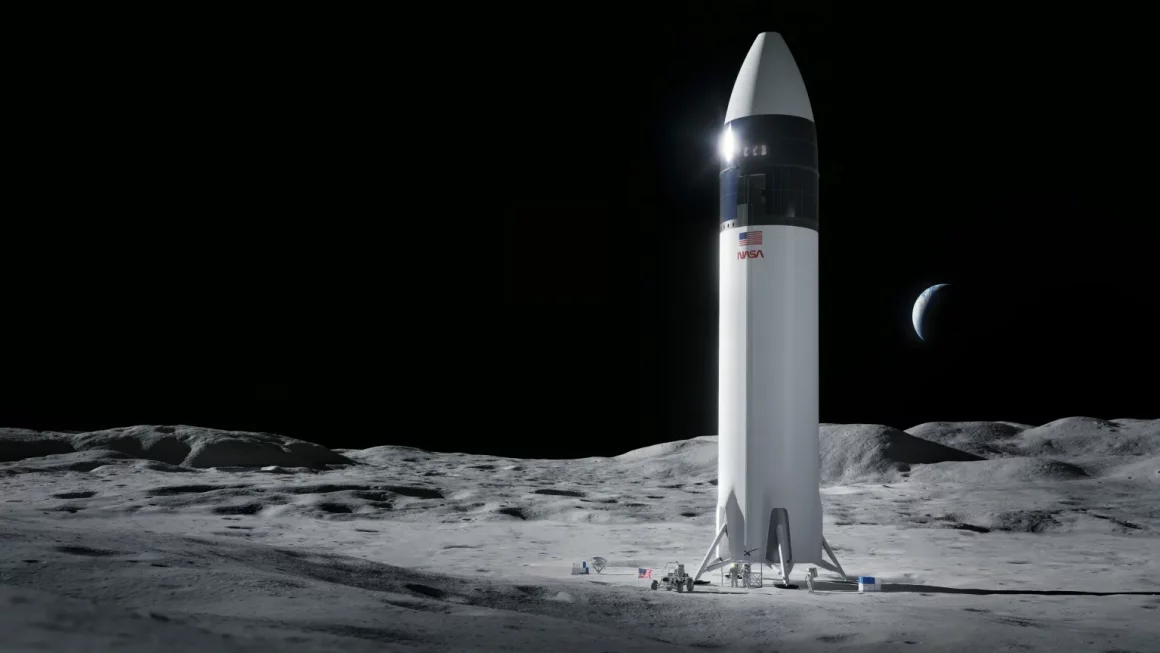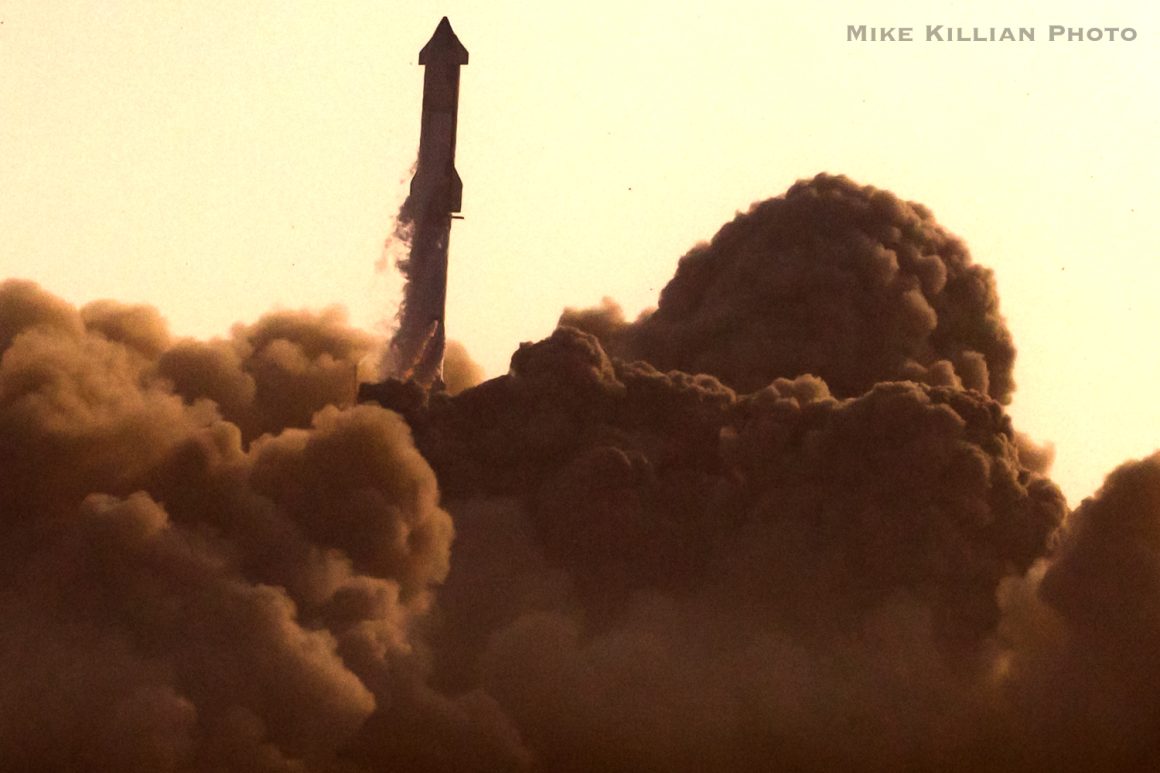UPDATE: Starship 25 (the second full test launch) launched today shortly after 7am Central Time. The first stage separated successfully but then encountered an anomaly and was destroyed. The second stage continued until 148km over the Gulf of Mexico where it also encountered a RUD (rapid unscheduled disassembly). The video below has the full launch sequence.
Original Story:
SpaceX is set to launch their second flight test of the Starship and Super Heavy rocket on Saturday morning, Nov 18. Liftoff is scheduled for 7:00am Central from Starbase, TX.
Watch it here:
You can watch the launch LIVE above on Saturday morning, beginning at 6:30am Central. You can watch SpaceX’s official webcast on their website or on X.
Second test follows explosive flight last April
Saturday’s flight test follows their first test launch earlier this year in April. That Starship was able to lift-off, but it destroyed its launch pad in doing so, and experienced multiple engine failures on ascent.
The Starship was remotely destroyed shortly after launch, at an altitude of about 24 miles by the Autonomous Flight Safety System (self destruct). After review, it was determined that the system took too long to execute, as there was quite a delay between the command and actual destruction. The explosion occurred near sensitive and populated areas. Local communities and protected environmental areas were impacted with debris and clouds of dust, even sparking a small wildfire.
A subsequent FAA investigation took seven months to complete. It involved other government agencies including the U.S. Fish and Wildlife Service (FWS), because Starbase is located on a federally protected wildlife refuge.

Launch is an important step toward lunar spaceflight and beyond.
The company’s new mammoth rocket and spacecraft stand nearly 400 ft tall when stacked. The first stage Super Heavy is equipped with 33 of the company’s own Raptor engines, which will produce nearly 17 million pounds of thrust on launch. By far the most powerful rocket ever.
NASA is helping fund Starship development to land Artemis on the Moon
Ultimately, SpaceX wants Starship flying heavy-lift crew and cargo missions to the moon and Mars. And they want a fully reusable system, even landing the rocket back on its launch pad. SpaceX already has paying customers for those future missions too, including NASA. NASA wants to land their Artemis crews on the moon using the Starship. The first moon landing on Artemis-3 is slated for possibly 3 years from now if SpaceX can successfully launch and keep a very tight timeline.

That said, the U.S. government has a high interest in Starship’s development. There can’t be a moon landing until Starship is ready. SpaceX had to consistently launch safe missions on the Falcon9 system before NASA ever put their astronauts onboard, and it will be no different for Starship. NASA wants to see around 20 Starship flights, from both Starbase and Kennedy Space Center, before they will trust the systm enough to put their crews on the Artemis-3 lander.
A look at Saturday’s flight test
Saturday’s scheduled Integrated Orbital Flight Test-2 won’t be going to the moon. Starship will launch, then perform staging separation a little after 2 minutes in flight. The massive rocket will then fly back and attempt a vertical landing splashdown about 20 miles off the coast of TX.

The Starship spacecraft meanwhile will ignite its own Raptor engines for 6 minutes, continuing on in flight for an hour before splashing down in the Pacific Ocean about 60 miles northwest of Kauai, Hawaii.
Neither the rocket or Starship for this test will be recovered or reused. SpaceX is constantly developing more test articles, in what they call a rapid iterative development approach. If this launch is successful, future iterations will attempt a landing.
